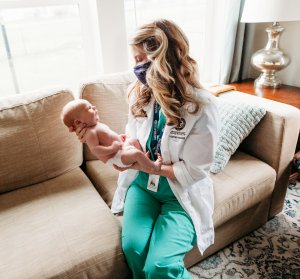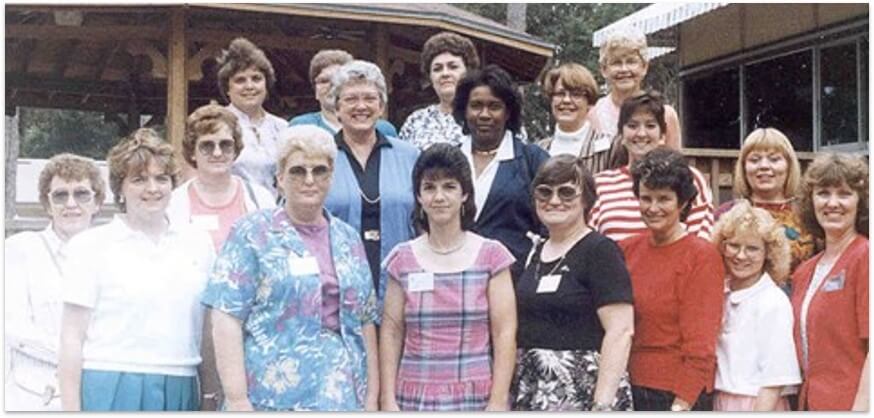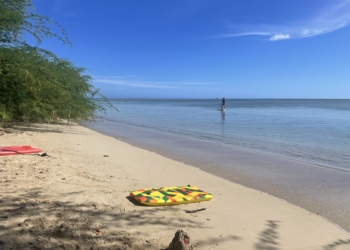A program that sends medical professionals directly into sailors’ and Marines’ homes is celebrating its centennial anniversary.
The Visiting Nurse Program began in South Carolina on Nov. 25, 1922, when the Parris Island Branch Auxiliary hired nurse Nell Watson to visit service members and their families at their homes. Since then, the program has utilized almost 900 paid and volunteer nurses to care for sailors, Marines and dependents.
“I attribute the longevity of Visiting Nurses to the flexibility of this organization,” said April Pearson, director of nursing at Navy-Marine Corps Relief Society (NMCRS). “We can recognize the needs of military families and be up-to-date with what’s going on with them.”
Personal touch
Visiting Nurses work within a 50-mile radius of dozens of NMCRS offices around the globe, as well as through virtual classes. The health care professionals are equipped to offer free, in-home services for all ages, including diabetes care, lactation consulting, prenatal and pediatric concerns and general wellness inquiries.
“It might just be us and the patient present, or there could also be babies, toddlers, spouses, grandmas, even dogs,” Pearson said. “We sit at the sofa or kitchen table and get to work.”

That work could include activities like weighing an infant, recording vital signs, educating about a chronic illness ― or just listening to someone who needs to connect with another human.
“In today’s sterile medical world, you usually only have 10-15 minutes to get all of the information back and forth between you and the provider,” said Pearson, who has been a visiting nurse since 2003. “But our nurses are able to sit down one-on-one with these families. Our visit may take two hours, or we may have multiple visits to ensure they get all of the info they need.”
Recently, Pearson heard from one of the program’s clients near their office in Corpus Christi, Texas. The woman, a new mother, needed some extra help with breastfeeding, driven in part by the nationwide formula shortage. A visiting nurse became a “gamechanger” for the woman, Pearson said, and empowered the mother with education and encouragement. It was so reassuring having someone in her corner when things got tough, the woman told Pearson.
“I love being able to go in and sit with these families and watch them grow,” Pearson said. “When I start talking about what I do as a nurse, my whole heart lights up.”
Saying thanks
Lisa Negri began working as a visiting nurse in 1994 from her home base of Twentynine Palms, California. She has treated approximately 10,000 patients in that time, ranging from veterans of World War II and conflicts in Korea, Vietnam, the Gulf, Afghanistan and Iraq.
Because the Visiting Nurse program is funded by private donors, businesses like USAA and a yearly fundraising drive, there are zero insurance restrictions. The nurses can see a patient as many times and as long as necessary.
“We do not strive for quantity, but rather quality,” Negri said. “In an age where many nurses count cases in dollars, we are fortunate to be able to count lives.”

As the daughter of a soldier who served in Normandy during WWII, this job ― one she plans to continue as long as possible ― is a way to stay connected to her father, Negri said.
“We truly are about improving the quality of life for Navy and Marine Corps active duty, retirees and family members in need,” she said. “I have the greatest respect for people who serve us in the military.”
That quality-of-life improvement also extends to the online space, where visiting nurses teach classes on labor and delivery, breastfeeding, puberty, parenting and more.
NMCRS has hired a dozen new nurses since 2020 and plans for more, including at overseas assignments.
“From newborns up to 95-year-old retirees, all of our clients have a story,” Pearson said. “And we visiting nurses are privileged enough to get to hear them.”
To contact a visiting nurse, email visitingnurse@nmcrs.org.
By the numbers
- 29,175: Miles driven by visiting nurses in 2021
- 12,791: Number of home visits/virtual class contacts from 2021
- 1,117: Average number of monthly home visits in 2022
- 336: Classes/support groups held in 2021
- 21: Current number of nurses







































